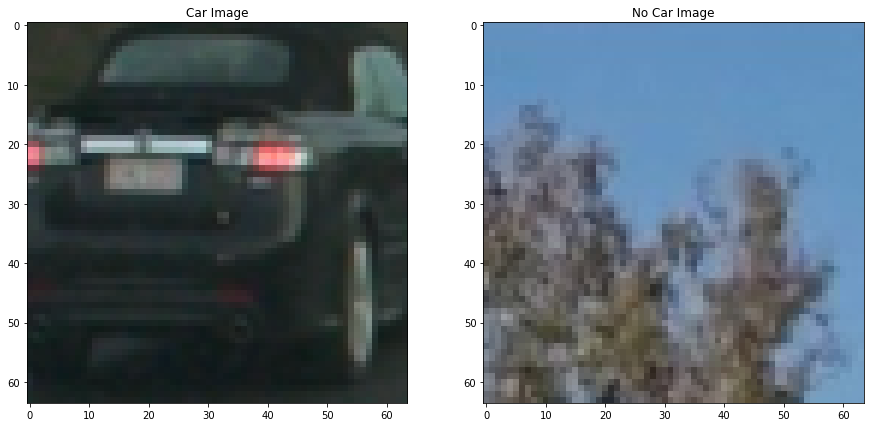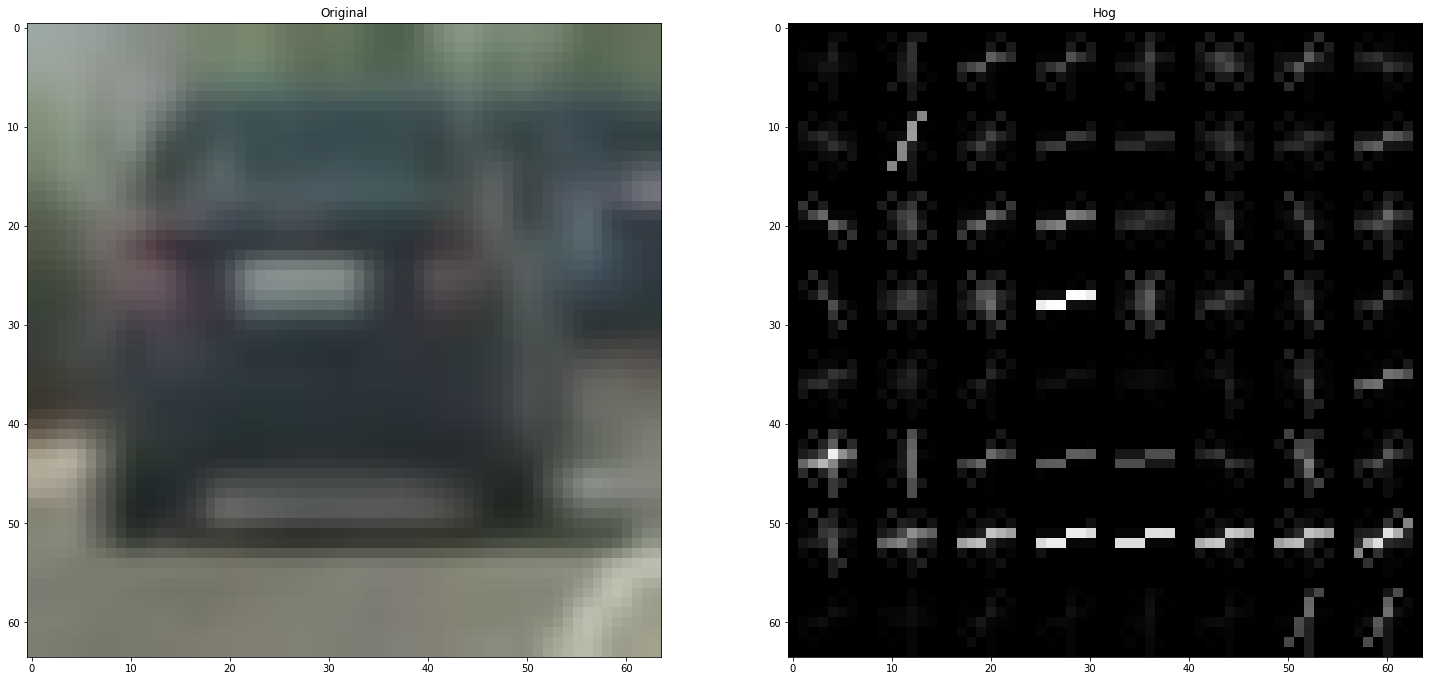I used two different methods to detect vehicles
-
Traditional CV Method (traditional_approach.ipynb)
- By traditional, I mean extracting features from the image and put into a classifier to detect if it's an vehicle
- Hand picked input features are required. That's why it's traditional
- For example, a histogram of oriented gradients (HOG) is used to extract features
- Then I used traditional sliding windows techniques to detect objects
- Detailed information can be found below
-
Deep Learning Method (deep_learning_approach.ipynb)
- Thanks to Vehicle Image Database, I was able to collect enough car and non car images to train a model
- I used a pre-trained VGG Net and fine tuning on the above datasets
- Then, I created a heat map from the output of the final convolution layers
- After creating a heatmap, it was breeze to detect vehicles
- Since the traditional method works way too slow in processing vidoes, I ended up using the deep learning method to create a final video
Rubric Points
You're reading it!
The code for this step is contained in the HOG section of traditional_approach.ipynb.
Before explaning the HOG features, I need to mention that the datasets I used are from Vehicle Image Database.
I used 8,792 car images and 8,968 non car images in total. Some of these images are shown below:
After loading the above images, I used skimage.features.hog with parameters
- orientations: 9
- pixels_per_cell: (8, 8)
- cells_per_block: (2, 2)
After applying hog,
I settled on the above mentioned parameters by comparing the visualizations on the car image and the non-car image.
3. Describe how (and identify where in your code) you trained a classifier using your selected HOG features (and color features if you used them).
There are 3 features concatenated in total. The codes for each step is located under the section called Image features & Transformation.
- HOG features
- Bin spatial features
- Histogram features
When all these 3 features are concatenates as a single array, its dimension becomes 8460.
So, the shape of the training data would be (n_samples, 8460).
Then I used Keras to build a simple neural network to train the model
The architecture was shown below:
_________________________________________________________________
Layer (type) Output Shape Param #
=================================================================
input_1 (InputLayer) (None, 8460) 0
_________________________________________________________________
dense_1 (Dense) (None, 512) 4332032
_________________________________________________________________
batch_normalization_1 (Batch (None, 512) 2048
_________________________________________________________________
activation_1 (Activation) (None, 512) 0
_________________________________________________________________
dropout_1 (Dropout) (None, 512) 0
_________________________________________________________________
dense_2 (Dense) (None, 512) 262656
_________________________________________________________________
batch_normalization_2 (Batch (None, 512) 2048
_________________________________________________________________
activation_2 (Activation) (None, 512) 0
_________________________________________________________________
dropout_2 (Dropout) (None, 512) 0
_________________________________________________________________
dense_3 (Dense) (None, 1) 513
_________________________________________________________________
activation_3 (Activation) (None, 1) 0
=================================================================
Total params: 4,599,297
Trainable params: 4,597,249
Non-trainable params: 2,048
_________________________________________________________________
Note how the final layer dimension is 1 because this is a binary classification problem (whether to detect there is a vehicle on the image)
Its final accuracy was 99.62% on test sets
1. Describe how (and identify where in your code) you implemented a sliding window search. How did you decide what scales to search and how much to overlap windows?
First, I implemented sliding windows and visualize on the image to get a feeling
Notice that I don't have to slide windows in the upper section of the image because it's only sky.
I set a height range of the sliding windows from 300 to 720 (full height of the image)
Then for ever window, I test if there is a vehicle detected.
Notice there is also a false positive in the bottom left corner. The false positive boxes are filtered out by generating a heat map, which will be explained below.
2. Show some examples of test images to demonstrate how your pipeline is working. What did you do to optimize the performance of your classifier?
-
Traditional methods
- Convert the image to YCrCb
- 3 Channel Hog features
- Spatially binned features
- Color histogram features
-
Deeplearning methods
- Uses RGB image as a raw
- Uses a pre trained vgg net as initial weights
- Fine tunes on the same dataset
- After this step, it's the same as the traditional method. Instead of hand picking features, it uses the output of the final CNN layer
Here's a link to my video result (deep learning method).
The traditional method takes way too long to process it...
2. Describe how (and identify where in your code) you implemented some kind of filter for false positives and some method for combining overlapping bounding boxes.
In order to false positives, I created a heatmap and filter out the weak bounding box.
For example, the same image from the above will look like this:
Notice the color in the bottom left corner is darker which means its scale is different. So I can simply threshold values to filter out false positives.
After that, I used scipy.ndimage.mearsuremetns.label() to separate each heatmap sections.
Then my final images with the bounding boxes would look like this
1. Briefly discuss any problems / issues you faced in your implementation of this project. Where will your pipeline likely fail? What could you do to make it more robust?
- The biggest problem: it's so slow! For example, the traditional method would take 2 hours to process 50 seconds vidoes. I need more fancier algorithms such as
YOLOorFaster R-CNNto detect vehicles in real time. - The second problem: the size of a bounding box is quite different from the object size. It probably can be overcome by sliding windows on a smaller windows but it's also likely to create more false positive. The best method would be to create an END-to-END network which can predict bounding boxes without sliding windows.











